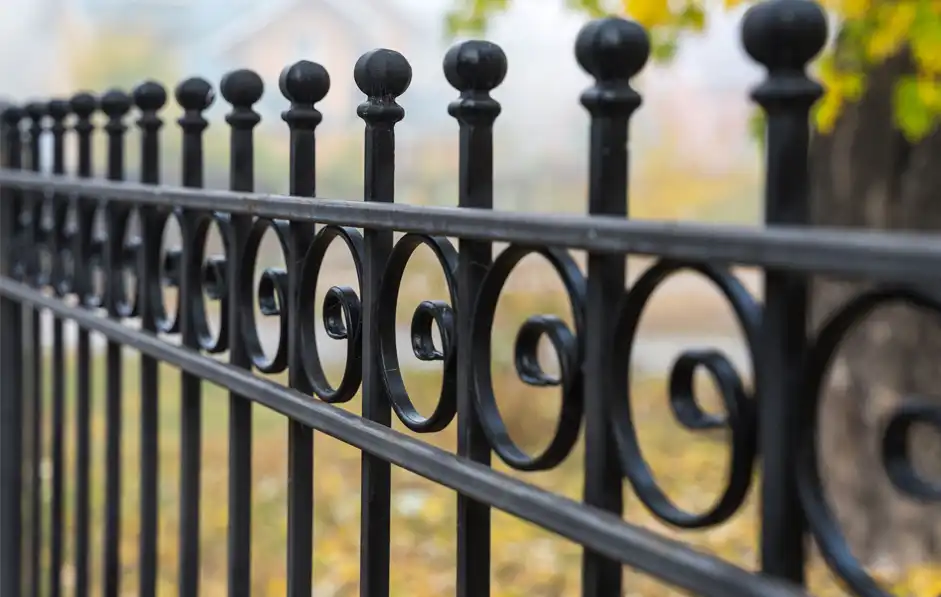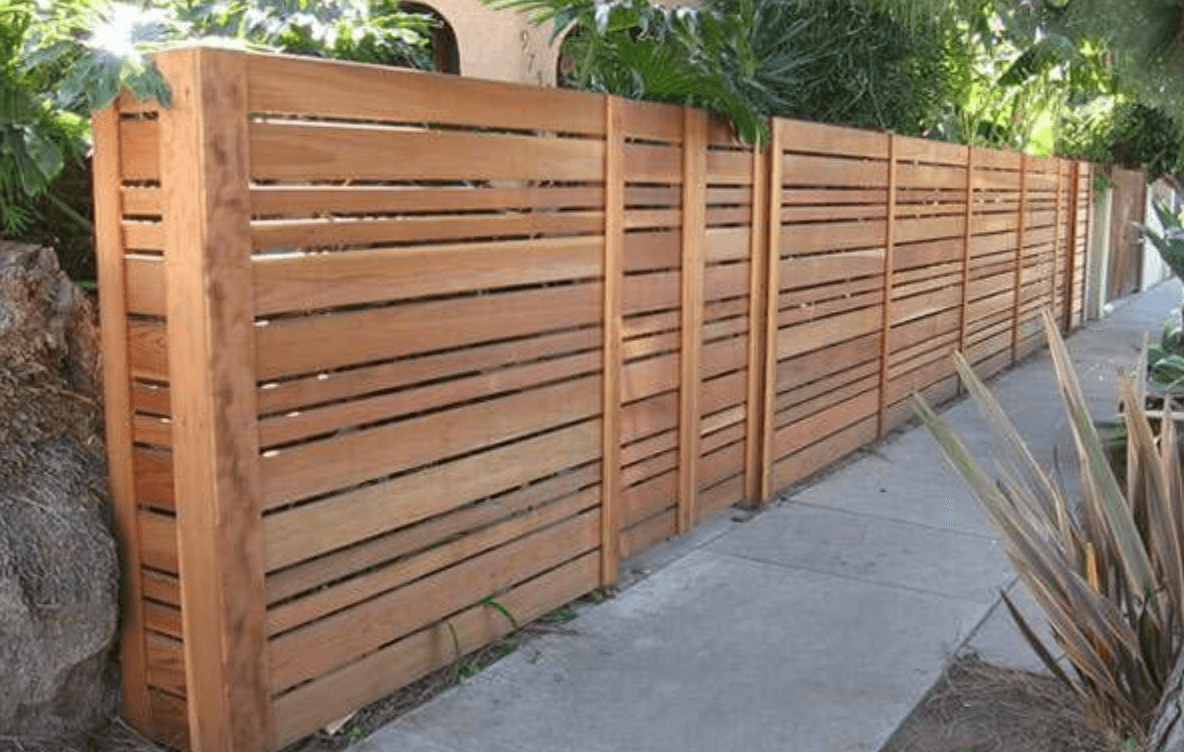All Categories
Featured
Picking the perfect fencing material for your building can be a complicated job with the selection of choices offered. Whether you're intending to increase safety and security, boost personal privacy, or boost the visual charm of your home or service, the appropriate fence can serve multiple functions. In this overview, we'll check out different secure fencing materials, their advantages, and which choices may be ideal fit for different requirements.
Advantages:
All-natural Appearance and Feel: Wood offers a warm, all-natural visual that matches yards, yards, and various other outdoor areas. Adjustable: You can discolor or paint timber fence any type of color, enabling endless style opportunities. Personal privacy and Security: When created as a solid panel, a timber fencing can provide excellent privacy and safety. Disadvantages:
Upkeep Required: Timber fences need regular upkeep to avoid rot, bending, and damage from insects like termites. At risk to Weather Condition: Exposure to sunlight, snow, and rain can weaken the high quality of the wood with time, which implies you might require to reseal or change boards. Best For: Property owners looking for a traditional, customizable fence with a natural appearance.
Benefits:
Long Lasting and Lasting: Plastic is immune to the weathering that timber fencings experience, and it won't warp, crack, or discolor. Low Upkeep: Unlike timber, vinyl doesn't call for discoloration or securing. Cleansing it is as easy as washing it with water. Selection of Styles: Plastic fencing is readily available in numerous designs and colors, and some variations even imitate the appearance of timber. Drawbacks:
Higher Initial Price: Plastic fencings can be much more expensive to install compared to various other materials, such as timber or chain link. Prone to Fracturing: While durable, plastic can come to be brittle and fracture in extremely cool temperatures or when struck with pressure. Restricted Personalization: Unlike timber, plastic can't be easily modified, so your layout alternatives are a lot more minimal. Best For: House owners who focus on low upkeep and long-lasting longevity, and that agree to purchase a higher first cost.
Advantages:
Economical: Among the most affordable secure fencing choices, making it optimal for large residential or commercial properties or locations requiring comprehensive coverage. Reduced Maintenance: Wire mesh fence require little to no upkeep beyond periodic cleaning and repairs. Resilient and Secure: While not visually appealing, wire mesh fence are strong, challenging to climb up, and give a high degree of protection. Downsides:
![]()
Absence of Personal privacy: A wire mesh fence doesn't supply much privacy unless you include slats or other modifications. Industrial Look: The cable mesh might not complement all residential property kinds, especially household homes or locations requiring a visual touch. Best For: Large buildings or areas where budget plan is a top priority, or for those who require a solid, secure border without the requirement for privacy.
Advantages:
Strong and Secure: Steel fencings use outstanding protection, as they are difficult to climb and supply a robust obstacle versus burglars. Long Life-span: Steel fences can last for years, especially when dealt with for corrosion and corrosion resistance. Elegant Visual: Wrought iron and steel fencings add an elegant, traditional seek to homes, yards, or commercial residential properties. Drawbacks:
Expensive: Metal fences, particularly wrought iron, often tend to have a greater in advance expense than other materials. Upkeep Needs: Steel and functioned iron fencings might corrosion with time otherwise correctly maintained, needing regular painting or treatment. Restricted Personal privacy: Metal fencings are generally open, so they do not offer the privacy that solid fencings like timber or plastic can supply unless integrated with various other materials. Best For: Those seeking a high-security, attractive option with a long life expectancy, especially for high-traffic or high end areas.
Advantages:
![]()
Low Upkeep: Composite fencing calls for no painting, staining, or sealing. It's easy to clean with simply soap and water. Toughness: Resistant to rot, parasites, and weather, composite fences last much longer than traditional timber. Eco-Friendly: Lots of composite products are made from recycled timber and plastic, minimizing ecological effect. Drawbacks:
Pricey: The preliminary expense of composite fence can be more than wood or vinyl. Limited Personalization: While offered in various shades, composite fencings don't supply as several layout choices as wood. Heavy: Composite products are often much heavier than various other kinds of secure fencing, which can make setup harder. Best For: Those that desire a low-maintenance, eco-friendly alternative that integrates the appearance of wood with increased durability.
Verdict. Selecting the appropriate secure fencing product for your property depends on a selection of elements, including your budget, aesthetic choices, personal privacy needs, and maintenance willingness. Whether you choose the timeless allure of wood, the low-maintenance benefits of plastic, the strength of metal, or the environment-friendly durability of composite, choosing the very best fence needs careful factor to consider of your property's one-of-a-kind demands. By understanding the benefits and constraints of each product, you can make an informed decision that gives long-lasting worth and contentment for your building.
- Wood Secure fencing. Wood secure fencing is a classic selection for many homeowners because of its natural charm, adaptability, and ability to blend effortlessly with different building designs. Available in a selection of designs, consisting of privacy, picket, and ranch rails, wood can be customized with paint or stain to match your wanted visual.
Advantages:
All-natural Appearance and Feel: Wood offers a warm, all-natural visual that matches yards, yards, and various other outdoor areas. Adjustable: You can discolor or paint timber fence any type of color, enabling endless style opportunities. Personal privacy and Security: When created as a solid panel, a timber fencing can provide excellent privacy and safety. Disadvantages:
Upkeep Required: Timber fences need regular upkeep to avoid rot, bending, and damage from insects like termites. At risk to Weather Condition: Exposure to sunlight, snow, and rain can weaken the high quality of the wood with time, which implies you might require to reseal or change boards. Best For: Property owners looking for a traditional, customizable fence with a natural appearance.
- Plastic (PVC) Secure Fencing. Plastic fencings have grown in popularity due to their low upkeep and durability. Made from synthetic plastic products, plastic fences are resistant to rot, fading, and insects, offering a tidy, modern appearance with little maintenance.
Benefits:
Long Lasting and Lasting: Plastic is immune to the weathering that timber fencings experience, and it won't warp, crack, or discolor. Low Upkeep: Unlike timber, vinyl doesn't call for discoloration or securing. Cleansing it is as easy as washing it with water. Selection of Styles: Plastic fencing is readily available in numerous designs and colors, and some variations even imitate the appearance of timber. Drawbacks:
Higher Initial Price: Plastic fencings can be much more expensive to install compared to various other materials, such as timber or chain link. Prone to Fracturing: While durable, plastic can come to be brittle and fracture in extremely cool temperatures or when struck with pressure. Restricted Personalization: Unlike timber, plastic can't be easily modified, so your layout alternatives are a lot more minimal. Best For: House owners who focus on low upkeep and long-lasting longevity, and that agree to purchase a higher first cost.
- Chain Web Link Secure Fencing. Wire mesh fence are a cost-efficient choice for those trying to find security without the high cost. Commonly utilized in commercial buildings, parks, and big houses, wire mesh fence offer an efficient border and are offered in a range of heights.
Advantages:
Economical: Among the most affordable secure fencing choices, making it optimal for large residential or commercial properties or locations requiring comprehensive coverage. Reduced Maintenance: Wire mesh fence require little to no upkeep beyond periodic cleaning and repairs. Resilient and Secure: While not visually appealing, wire mesh fence are strong, challenging to climb up, and give a high degree of protection. Downsides:

Absence of Personal privacy: A wire mesh fence doesn't supply much privacy unless you include slats or other modifications. Industrial Look: The cable mesh might not complement all residential property kinds, especially household homes or locations requiring a visual touch. Best For: Large buildings or areas where budget plan is a top priority, or for those who require a solid, secure border without the requirement for privacy.
- Steel Secure Fencing (Light Weight Aluminum, Steel, Wrought Iron) Metal fencings, such as light weight aluminum, steel, and functioned iron, are preferred for their safety and security, toughness, and stamina. These products are frequently made use of in high-security industrial buildings, high end houses, and those seeking a sophisticated, attractive look.
Advantages:
Strong and Secure: Steel fencings use outstanding protection, as they are difficult to climb and supply a robust obstacle versus burglars. Long Life-span: Steel fences can last for years, especially when dealt with for corrosion and corrosion resistance. Elegant Visual: Wrought iron and steel fencings add an elegant, traditional seek to homes, yards, or commercial residential properties. Drawbacks:
Expensive: Metal fences, particularly wrought iron, often tend to have a greater in advance expense than other materials. Upkeep Needs: Steel and functioned iron fencings might corrosion with time otherwise correctly maintained, needing regular painting or treatment. Restricted Personal privacy: Metal fencings are generally open, so they do not offer the privacy that solid fencings like timber or plastic can supply unless integrated with various other materials. Best For: Those seeking a high-security, attractive option with a long life expectancy, especially for high-traffic or high end areas.
- Compound Fencing. Compound secure fencing combines timber fibers and plastic to produce a material that resembles the look of timber yet is a lot more durable and simpler to keep. It's a green alternative made from recycled materials, making it both sustainable and useful.
Advantages:

Low Upkeep: Composite fencing calls for no painting, staining, or sealing. It's easy to clean with simply soap and water. Toughness: Resistant to rot, parasites, and weather, composite fences last much longer than traditional timber. Eco-Friendly: Lots of composite products are made from recycled timber and plastic, minimizing ecological effect. Drawbacks:
Pricey: The preliminary expense of composite fence can be more than wood or vinyl. Limited Personalization: While offered in various shades, composite fencings don't supply as several layout choices as wood. Heavy: Composite products are often much heavier than various other kinds of secure fencing, which can make setup harder. Best For: Those that desire a low-maintenance, eco-friendly alternative that integrates the appearance of wood with increased durability.
Verdict. Selecting the appropriate secure fencing product for your property depends on a selection of elements, including your budget, aesthetic choices, personal privacy needs, and maintenance willingness. Whether you choose the timeless allure of wood, the low-maintenance benefits of plastic, the strength of metal, or the environment-friendly durability of composite, choosing the very best fence needs careful factor to consider of your property's one-of-a-kind demands. By understanding the benefits and constraints of each product, you can make an informed decision that gives long-lasting worth and contentment for your building.
Latest Posts
Join WyHy FCU – Exclusive Benefits for Your Financial Success
Published May 22, 25
1 min read
Join WyHy FCU – Top Benefits for Your Financial Future
Published May 21, 25
1 min read
Discover Cost-Effective Auto Repairs with Montclare’s Monthly Service Specials
Published May 20, 25
1 min read
More
Latest Posts
Join WyHy FCU – Exclusive Benefits for Your Financial Success
Published May 22, 25
1 min read
Join WyHy FCU – Top Benefits for Your Financial Future
Published May 21, 25
1 min read
Discover Cost-Effective Auto Repairs with Montclare’s Monthly Service Specials
Published May 20, 25
1 min read